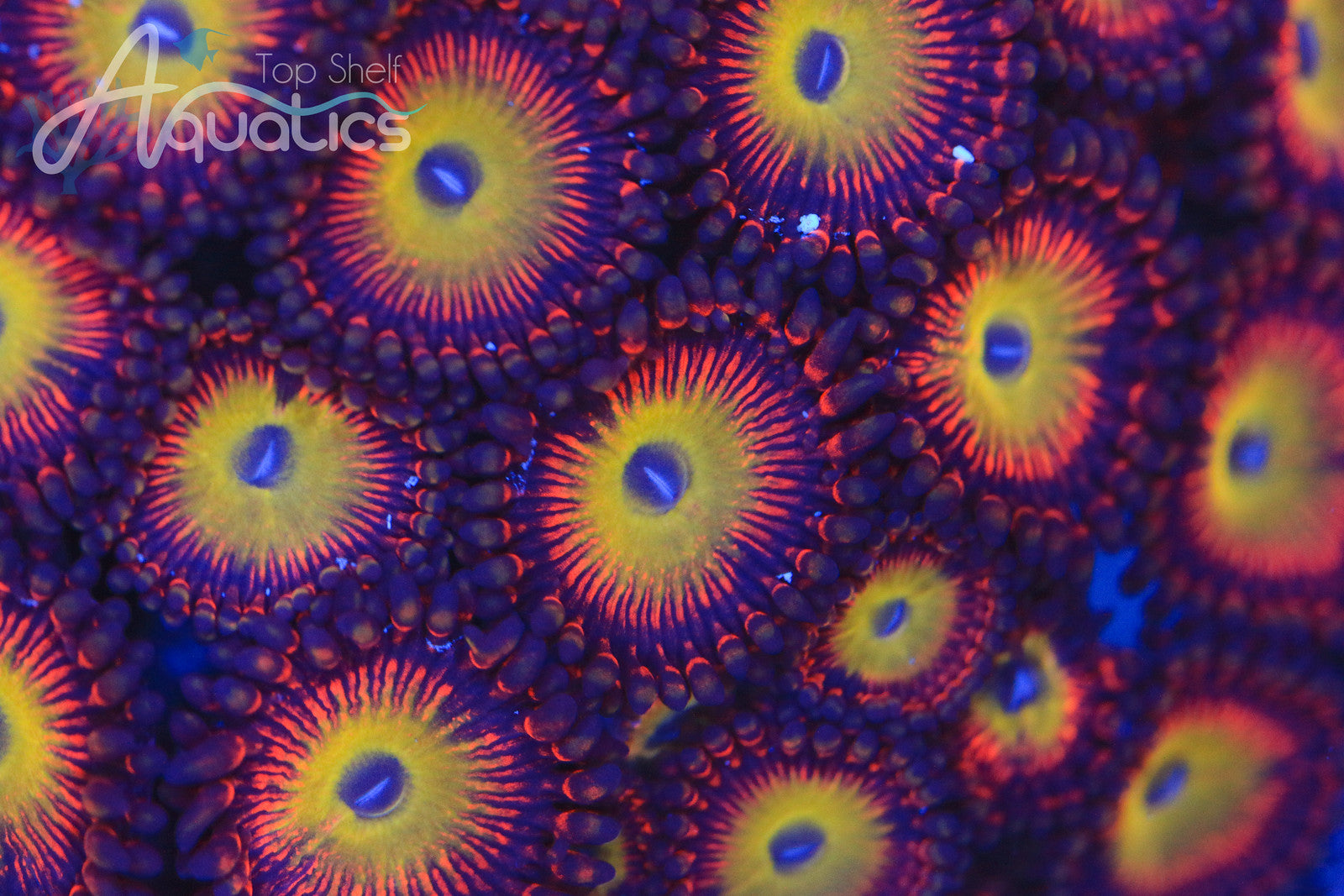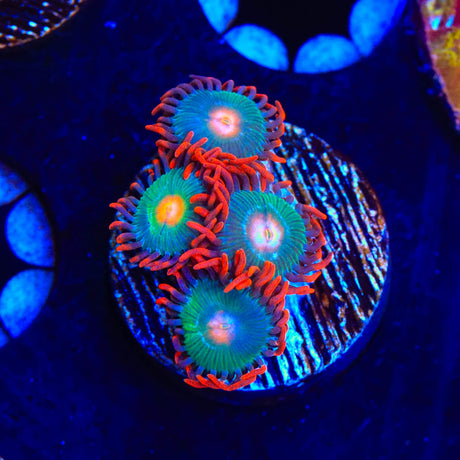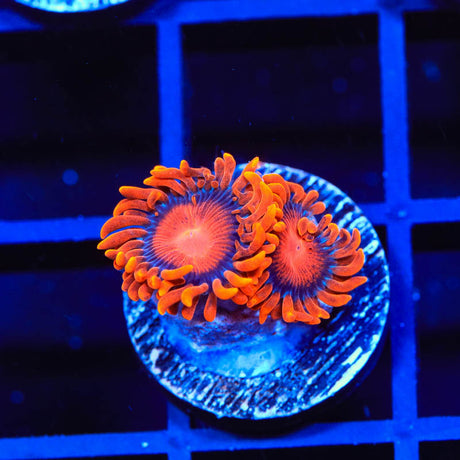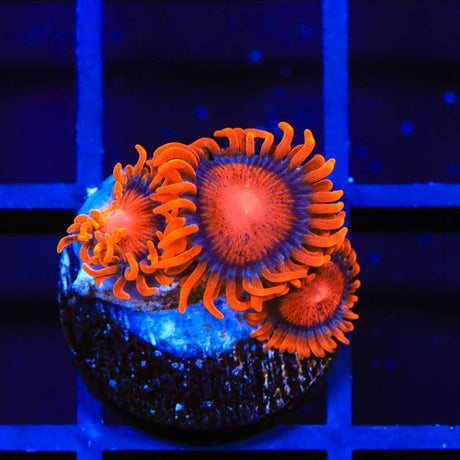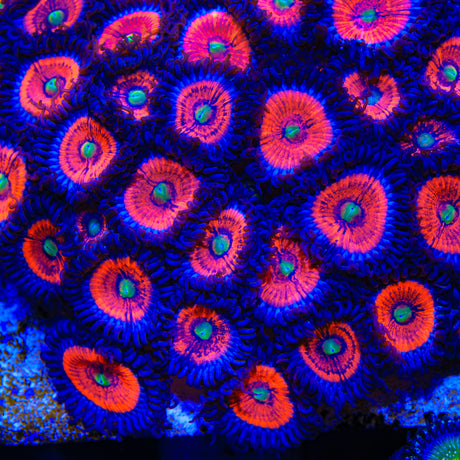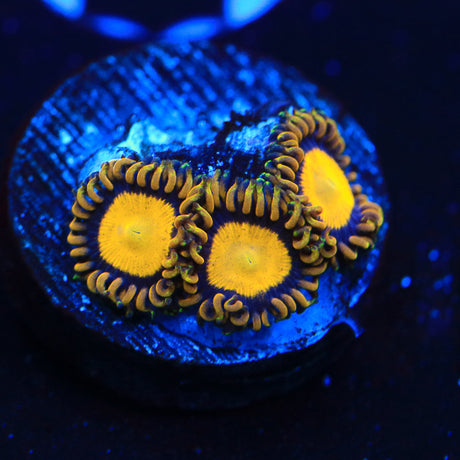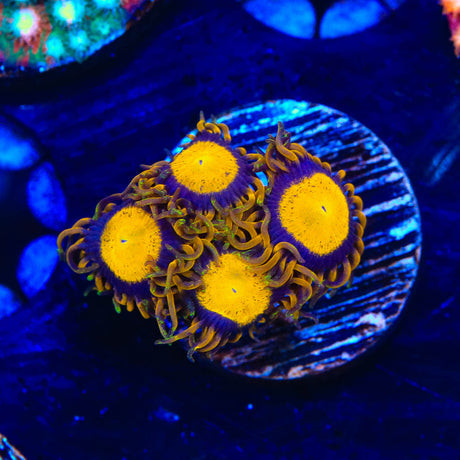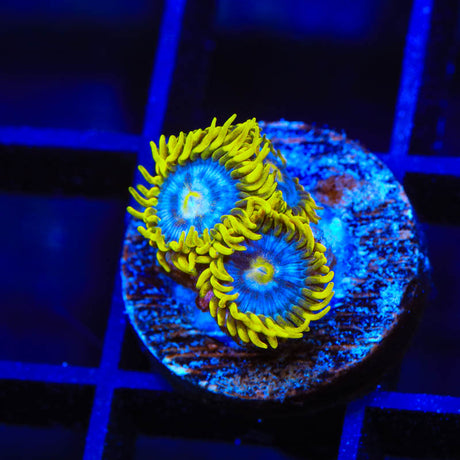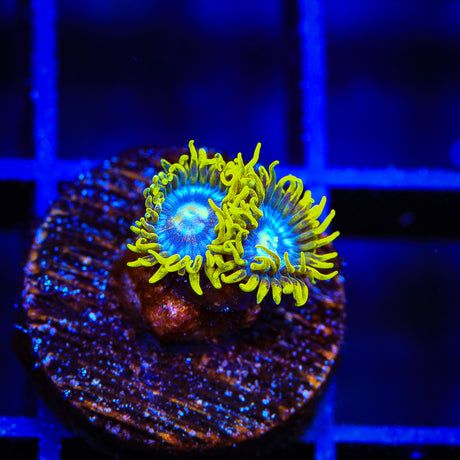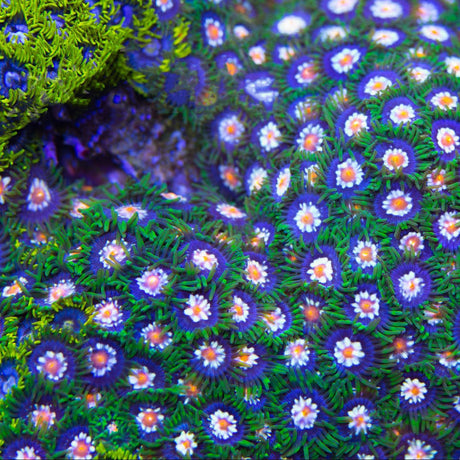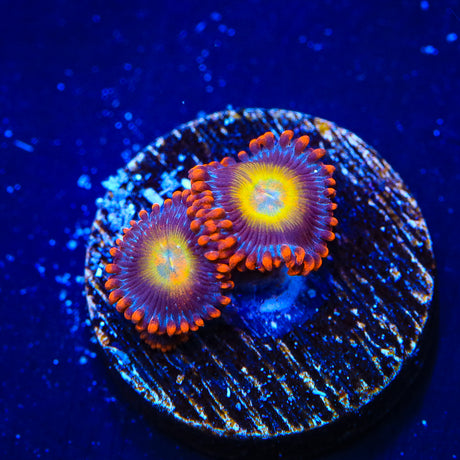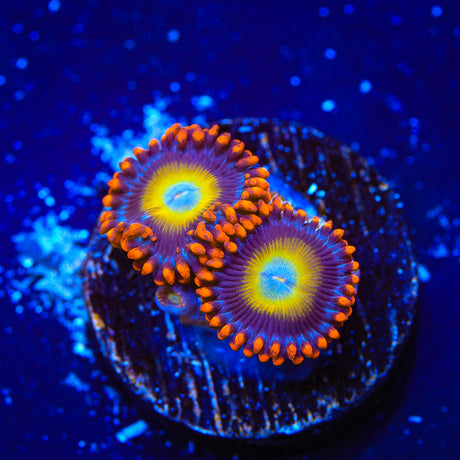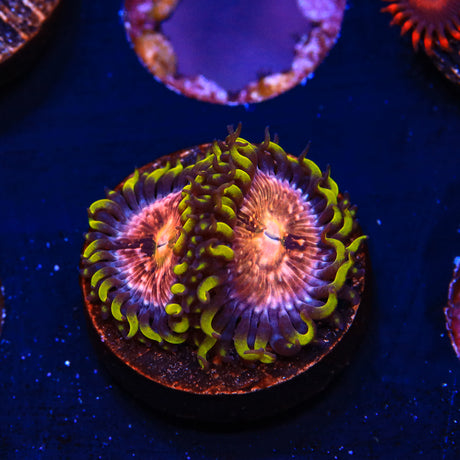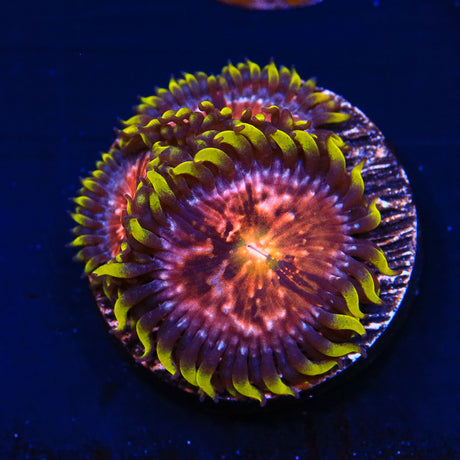Zoanthids and Palythoas are arguably one of the easiest and most popular coral species to keep. They are loved by collectors and hobbyists of all experience levels due to their endless variety of color and patterns.
Commonly referred to as “Zoas” and “Palys”. They are both considered colonial-type corals because they tend to grow into large colonies.
Typically, Zoanthids are more sought after and desired by hobbyists as they tend to exhibit more eccentric patterns and coloration in comparison to Palythoas. Additionally, Zoanthids tend to have a smaller polyp size as compared to Palythoas.
Provide your Zoas and Palys with low to moderate flow. This prevents buildup of debris within the colony as well as possible bacterial infections.
We recommend placing new frags at the bottom of your aquarium in a low-light area to give them time to adjust to your system. If the frag needs more light the stalk will begin to stretch towards the light.
Zoas and Palys tolerate an array of aquarium environments as far as water chemistry, but tend to thrive in a slightly more nutrient-rich environment. Stability is the biggest key to keeping Zoas and Palys happy.
A happy, healthy colony will have a tight mat of tissue that connects the individual polyps as opposed to blotchy intermittent runners connecting them. Having a healthy colony will produce new small polyps that surround the main polyp or colony.
Zoanthids and Palys exhibit a more passive-type of feeding style than other types of corals. They rely on light for the majority of their nutritional needs but benefit from the regular dosing of amino acids and liquid foods like Fuel and Phytoplankton.
Let's get serious for a minute. The most important thing to note about these corals (mainly Palys) is that they both contain a toxin called: Palytoxin. While Palytoxin poisoning cases are extremely rare, always take precautions when handling these animals.
The easiest way to avoid Palytoxin exposure is by education and taking proper safety precautions. Glove and eye protection are highly encouraged when handling, fragging and removing them from the water.
Do not under any circumstance scrub, dip, boil rocks or frag plugs with existing Zoanthid or Palythoa polyps. This can irritate the polyps and potentially cause them to release the Palytoxin. The toxin has the potential to become airborne, exposing you and anyone within the vicinity to the Playtoxin. With that said, if you follow the correct safety measures, you should have no concerns surrounding Palytoxin exposure.
Zoanthids and Palythoas are fun, easy to keep corals that come in endless variations of colors and patterns. They are one of the few corals that are sought after by both beginner and advanced hobbyists alike. While Zoas and Palys may be small, don't underestimate their ability to bring that pop of color and natural-reef aesthetic to your aquarium.

